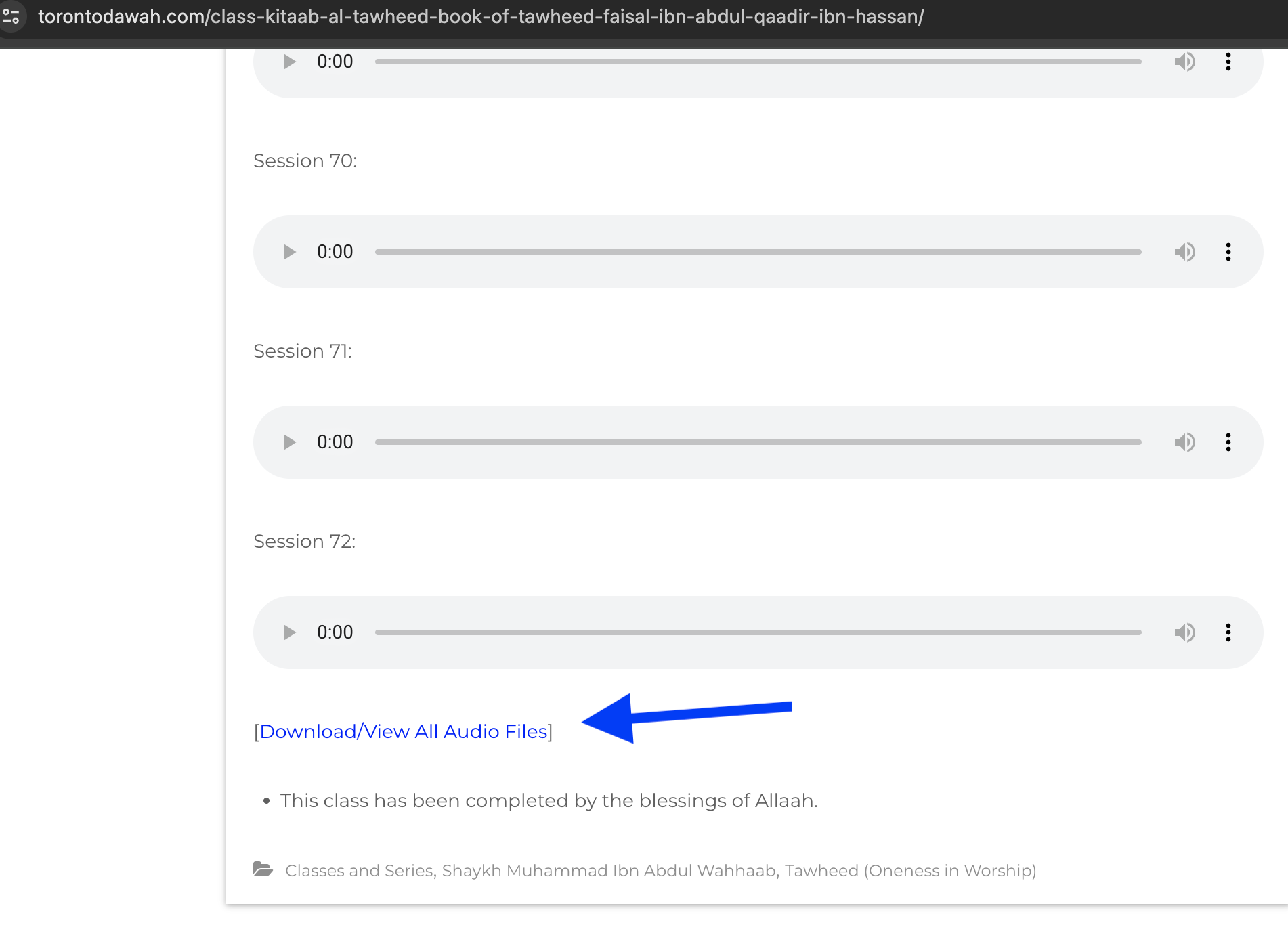Shaykh Muhammad Nasiruddin Al-Albani was asked:
Question: “What is the best way to build a masjid in agreement with the Prophetic Sunnah?”
Questioner: “What are the specifications in building the Masjid from the Sunnah and I hope (from you) clarity?”
Shaikh Al Albani: “And this is what you cannot establish nowadays, so what is the benefit [in asking]?”
Questioner: “Some brothers who want to build a masjid.”
Shaikh Al Albani: “They are not able to because the Minister of Islamic Endowment is an obstacle in the implementation of the Sunnah of Muhamad (ﷺ).”
Student: “Cornerstone others say building stone of Islam and others say: the art of building”
Shaikh Al-Albani: “The Salafi masjid, I placed for it a map in the book that I began a long time ago and I walked a short cycle in it and it is that which I called Thamr al-Mustadaab fi fiqh Sunnah wal-Kitaab.
When I reached the Book of the Masaajid and the prohibition of the Messenger (ﷺ) in adorning the Masaajid. Narrations from them in Sunnan Abu Dawood that the Prophet (ﷺ) entered one day into his masjid from the door, he used to have doors, he entered the door and said: If we left this door for the women. The Messenger said this and with him was Abdullah ibn Umar radi Allahu anhu entering into the masjid of the Messenger (ﷺ) and he was saying this hadith. Abdullah ibn Umar caught the Messenger (ﷺ) saying:
لو تركنا هذا الباب للنساء
If we left the door for the women, ie. We do not enter it, we, the men.
Naafi’ the free servant of Ibn Umar said: So Ibn Umar did not enter the masjid after that from this door, ever. [Saheeh Sunan Abi Dawood no. 461 and others]”
The Student: “Allahu Akbar (in affirmation)”
The Shaikh: “I take from this hadith that it is necessary there is in the salafi masjid a door specific for the women which the men do not share. In short, I agreed to travel to Egypt ten years ago and we travelled to a big town or land, its name was Suhaj”
The Student: “Yes”
The Shaikh: “And there was a group from Ansaar us-Sunnah, they are called that there, they said to me, ‘we are building a masjid, do you want to see how it is’. So we went with them, [saying] this is the door and this is the qiblah until the end of it… after they described to me I said to them, ‘where is the door for the women’? So I benefited them and I hoped that they will apply it, that is, the point is the masjid which the narrations and ahaadith point to, it is necessary first not to have a staff. The pillar is one piece clean-cut until it does not cut the lines. After that, it is necessary not to have a mihraab and it is necessary that there is no minbar cutting the lines. And the minbar is three levels and it establishes the obligation of the minbar and the obligation of the mihraab and in it is an action-based refutation on those who say that the mihraab points to the qiblah. We say that the minbar points to the qiblah and this minbar points to the qiblah for the blind more than the mihrab…until the end.
However these proofs are falsehood in order to traverse this innovation which plagued the people since the first generation approximately. Along with that the Messenger of Allah (ﷺ) , his masjid was free from the mihraab and upon the opposite of that, he said:
اتقوا هذه المحاريب
“Beware of these mahaarib”.
[Saheeh Jami no. 120]
That is because this is the custom of the Christians in their churches and like that some of the salaf, from them Abdullah ibn Masud radi Allahu anhu, used to dislike to pray in the Taaq, that is, the mihraab. He avoided the salat in the mihraab because this is from the character of the Christians while the Messenger (ﷺ) prohibited it and ordered us to avoid it.”
Questioner: “That is, after Abdullah ibn Masud they entered the mihraab in the masjid”
The Shaikh: “We said from ancient”
The Student: “Allahu Akbar”
The Shaikh: “The point is it is necessary that the masjid first be like that. It does not have in it columns, it has in it a minbar with three levels, does not have in it a mihraab and it has a door for the women that they enter from and exit from that the men do not share. It is necessary to have there a place for the women to pray. However, this place is not necessary to be veiled from the men with a screen or wall because the legislated clothing, which is obligated from the clothing of the women, is the hijab. That is because the women are good enough to share with the men in seeing the Imam and the movements of the followers behind him and this is all from his guidance (ﷺ) and his seerah. Nowadays, the people have left important things and came with things that are not important. From these things that are not important are to separate the women from the men with concrete, it is not necessary for this separation, however the necessity which is revealed to them is to cover the women. Most of them are exposing their charms, so they pray exposed, meaning the eyes of the men fall on what is not allowed, so then we say:
أوردها سعد وسعد مشتمل ما هكذا يا سعد تورد الأبل
‘Sa’d gave water to the camels and Sa’d was wrapped up
This is not how you give water to the camels Oh Sa’d’
A mistake is not corrected by a mistake. It is said to the women who want to attend the Masjid, this is allowed for them, and it is better for them the opposite sometimes from the principle: “and their houses are better for them”. It is said to them, “wear your legislated clothing and attend the Masjid as you are, no one from you shows at all the impermissible Awrah”. So then, the women wear hijab from the men in spite of the dislike of the men and women altogether. This is what I remember from the Masjid. I say that this is not possible for you because the minister of endowments makes the condition on you that it is necessary to have in it (the masjid) a mihrab, it is necessary to have in it a minaret passing through the clouds while these minarets in my belief are from the public interest and are not from the Sunnah of worship. The minarets are from the public interests, that is the purpose from it.”
The Questioner: “Even if from their wealth specifically?”
The Shaikh: “Even there is no place for it with the bedouin. That it is from his pocket specifically or a group, all of that is a waste of money. The important thing is that the minaret is from the public interest, the purpose is to convey the voice of the muadhin to the farthest possible place. There was not back then the innovative means present today from the microphones, and like that, they brought the natural easy means then, so they build the minaret. Then with time they made a work of art in building minarets.
I was given a trip to Morroco, it is possible I show it with a picture what is called, the capital of the Morroco… Ribat, its minaret. That is, the distance of its width is six/seven meters, it is possible you can make it [into] a house. High above uncovering the whole land. Why this unnecessary burden? Why this waste of money? It began so we can convey to the people the voice of the muadhin. In the time of the Messenger of Allah (ﷺ), there was not a minaret. However in some established narrations with us that the Messenger of Allah’s muadhin used to be apparent on the roof of the Masjid and in a raised place, in this place he used to make adhan. One of the muadhins of the Messenger of Allah Umar Ibn Umm maktum was weak in eyesight, so he used to climb that place and he was weak in eyesight and make adhan of Fajr and he would not make adhan until the people passed it and saw him.
He was not concealed in a minaret where the onlooker cannot see him. So it would be said to him, ‘Fajr has come, Fajr has come’ and he would make adhan based on the reports of the people passing in the street. So the minaret was not in the time of the Messenger (ﷺ) , however in it was ascension from a place to a raised place. Like that it came in Saheeh al-Bukhari that between the Iqamah of Salah and between the sahoor, I think, was the approximate time of the ascension of this muadhin and descending of that first muadhin and second in the two adhans. Its meaning is ascension in it and descending of this one notifies us that the muadhin emerges and his ascension to high place. The purpose is the conveying the voice to the people, with that, so the people made minarets, the purpose is what, a means and they have exited from it being a means. A means is you rise above and you convey to the people, however, they are accustomed to exaggerating in raising its building and its loftiness and they exaggerated in engraving its stones and…etc.
Until in this time present with microphones, we see for example the masjid of Salaah ud-Deen Ayyubi we see one story, two stories, three stories, what is this unnecessary burden? What is this waste of money? No one can rise to the top absolutely because common folk make adhan in the middle of the masjid. So then, building the minaret in the masjid becomes, like the Aktoros [a name of a model of a truck built by Mercedes] it has no meaning, not logical nor reported.
This is what the Messenger(ﷺ) warned against by his statement:
لا تقوم الساعة حتى يتباهى الناس بالمساجد
The hour will not establish until the people will vie with the Masaajid.
[Saheeh Sunan Abi Dawood no. 449 and others]
The filthy one builds a masjid that has no comparison and builds a minaret that has no comparison…etc. This is from the signs of establishment of the hour by the text of the Messenger (ﷺ). As for adorning of the masjid, we did not mention it right now. So it necessary that the masjid is unsophisticated, there is no adornment in it. And like that Umar ibn al-Khattab radi Allahu anhu was forced to expand the Prophet’s masjid in his time period, he said to the engineer, what they call it today, He said, ‘Protect the people from heat and cold and beware of the red and yellow’, that is, the purpose of the masjid is that it be for the people a shelter for them from heat and cold and not red or yellow… yes.”
The Student (asks): “[Is] ‘for they are a trial for the people’ an addition to the narration”?
The Shaikh: “I did not mention this. Beware of red and yellow because they are adornment and the houses of Allah is obligatory to be free from the affairs of the world. This is the house of Allah. Nowadays the understanding has been reversed unfortunately due to the people being distanced from taking guidance in the guidance of the Messenger (ﷺ) . Nowadays if you detest the people, this adornment they will answer with two doubts. The first doubt, and it is the filthier of the two, that is the Christians are better than us, see the Christians, see the Christians they exaggerate in the adornment of the churches, our Masaajid are more deserving of adornment. From the people are those who say the house of Allah is less than our house, our house we live in we adorn them and they plaster it with whitewash…etc.
The house of Allah is rightful
and whoever venerates the signs of Allah then verily that is from the taqwa of the hearts [22:32].
This is from the revelation of Shatyaan because the Messenger (ﷺ) when ibn Abbas reported from him:
ماأمرت بتشييد المساجد
“I was not ordered to build lofty Masaajid”.
[Saheeh Sunan Abi Dawood no. 448 and others]
a hadith. Ibn Abbas heard it from the Messenger “I was not ordered to build lofty Masaajid”. Ibn Abbas:
لتزخرفنها كما زخرفت اليهود والنصارى
“You will adorn them as the Jews and Christians adorned”.
So all of the ahaadith and narrations are agreed that the masjid should be in a humble form. There is no adornment in it to busy the hearts of the people. It is necessary for the people to be in an atmosphere aiding him upon the obedience of Allah azza wa jall. As for this adornment and engraving, then it is a distraction. What do we say about ourselves if we mention a hadith from our Prophet(ﷺ) that he prayed one day in a khamisa, a thawb with marks, this is with us in Shaam called as-Saayih which has green and blue and white and red lines..etc. So he prayed that day in the khamisa, he was not able to pray, he removed this khamisa and said:
خذوا هذه الخميصه وآتونى بأبنجانية أبى جهم فأنها الهتنى
“Take this khamisa and bring me the Anbijaaniha of Abu Jahm for verily it distracted me”
[Bukhari no. 337 and Muslim no.556 and others]
and in another version:
“it almost distracted me from my prayer”
This is the Ameen, this is the Messenger of Allah. We increase in adornment as if we are coming near to Allah in position.”
The Student: “Allahu Akbar”
The Shaikh: “When he (ﷺ) entered the ka’bah, he prayed inside the ka’bah and he found inside the ka’bah the horns of the ram Ismaael so he ordered to cover it because it distracts that affair of the praying one [Saheeh Sunan Abi Dawood no. 2029 and others]. Therefore, we reversed all of these guidelines.”
The Student: “It is present”
The Shaikh: “Allah, we did not enter and did not reach, yes we end.”
The Student: “The tea is cold… the sheikh and the students laugh…”. End. [Silsilatul Huda wa-Nur tape no. 162 Starting at around 00:13:09 ending around 00:29:49]
Translated by
Faisal Ibn Abdul Qaadir Ibn Hassan
Abu Sulaymaan




